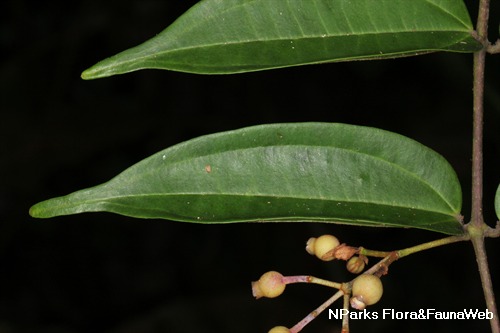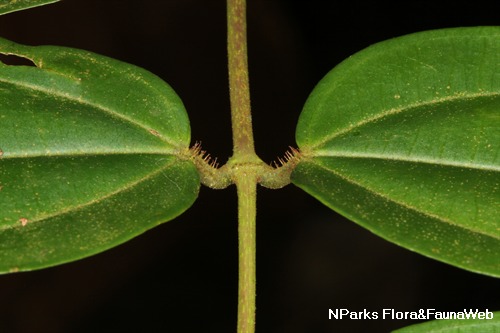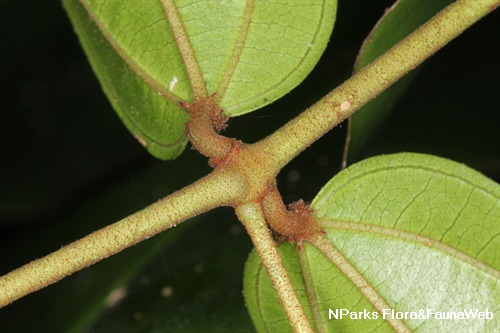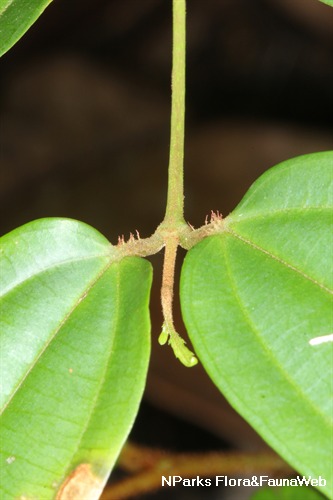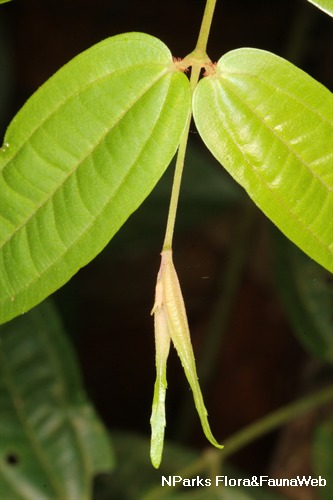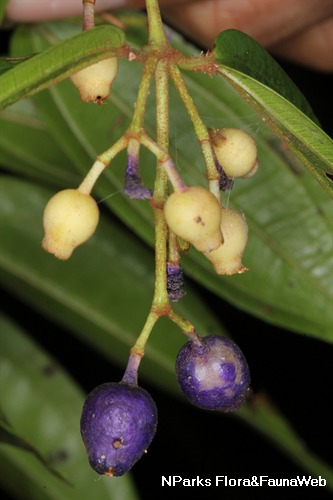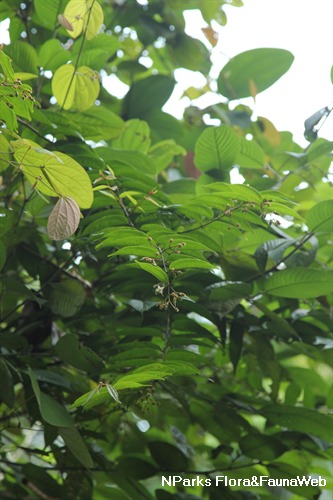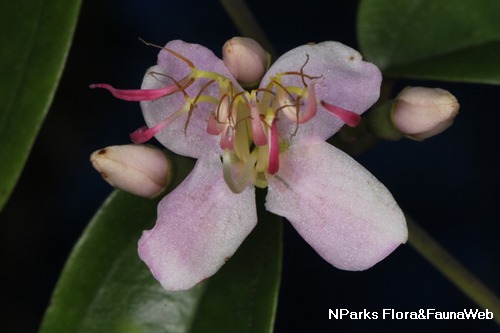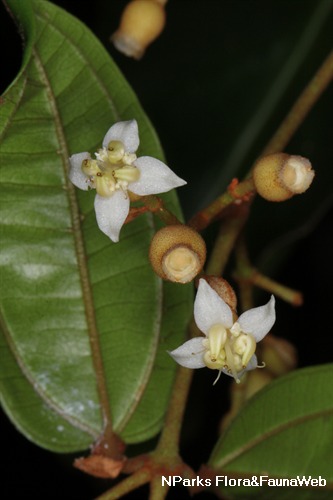
Back
Dissochaeta divaricata (Willd.) G. Don
| Family Name: | Melastomataceae |
| Synonyms: | Diplectria divaricata (Willd.) Kuntze, Melastoma divaricatum divaricatum |
Name
Classifications and Characteristics
| Plant Division | Angiosperms (Flowering Seed Plants) (Dicotyledon) |
|---|---|
| Plant Growth Form | Climber |
| Lifespan (in Singapore) | Perennial |
| Mode of Nutrition | Autotrophic |
| Plant Shape | Irregular |
| Maximum Height | 15 m |
Biogeography
| Native Distribution | Cambodia, Laos, Myanmar, Vietnam, Thailand, Sumatra, Malaysia, Singapore, Borneo, Java, the Moluccas, and New Guinea |
|---|---|
| Native Habitat | Terrestrial (Primary Rainforest, Secondary Rainforest, Freshwater Swamp Forest, Riverine, Disturbed Area / Open Ground) |
| Preferred Climate Zone | Tropical, Sub-Tropical / Monsoonal |
| Local Conservation Status | Native to Singapore (Critically Endangered (CR)) |
Description and Ethnobotany
| Growth Form | It is a woody climber up to 15 m long. |
|---|---|
| Foliage | Its opposite, stalked leaves have leaf blades that are egg-shaped, oblong or lance-shaped, and 3.5–17 by 1.5–8 cm. |
| Flowers | Its laxly-branched flowering shoots are up to 30 cm long, found at the leaf axils or the ends of leafy twigs. The flowers have white, pale purple or pinkish petals. |
| Fruit | Its fruits are almost round, and 4–8 by 8 mm. |
| Habitat | It grows on lowland trees along rivers, roadsides, and in evergreen forests. |
| Associated Fauna | Its flowers are insect-pollinated, and its fruits are eaten by birds. |
| Cultivation | It can be propagated by seed. |
| Etymology | Greek Dissochaeta, double hair or bristle, referring to the anthers; Latin divaricata, spreading, referring to the flowering shoots |
Landscaping Features
| Landscaping | It may be suitable for parks. |
|---|---|
| Desirable Plant Features | Ornamental Flowers, Ornamental Fruits |
| Landscape Uses | Parks & Gardens, Small Gardens, Trellis / Arbour / Pergola |
Fauna, Pollination and Dispersal
| Fauna Pollination Dispersal Associated Fauna | Bird-Attracting |
|---|---|
| Pollination Method(s) | Biotic (Fauna) |
| Seed or Spore Dispersal | Biotic (Fauna) |
Plant Care and Propagation
| Light Preference | Full Sun, Semi-Shade |
|---|---|
| Water Preference | Moderate Water |
| Plant Growth Rate | Moderate |
| Rootzone Tolerance | Moist Soils, Well-Drained Soils, Fertile Loamy Soils |
| Propagation Method | Seed |
Foliar
| Foliage Retention | Evergreen |
|---|---|
| Mature Foliage Colour(s) | Green |
| Mature Foliage Texture(s) | Hairy / Hirsute, Leathery |
| Foliar Type | Simple / Unifoliate |
| Foliar Arrangement Along Stem | Opposite |
| Foliar Attachment to Stem | Petiolate |
| Foliar Shape(s) | Non-Palm Foliage (Ovate, Lanceolate, Oblong) |
| Foliar Venation | Pinnate / Net, Parallel |
| Foliar Margin | Entire |
Floral (Angiosperm)
| Flower & Plant Sexuality | Bisexual Flowers |
| Flower Colour(s) | Pink, Purple, White |
|---|---|
| Flower Grouping | Cluster / Inflorescence |
| Flower Location | Axillary |
| Flower Symmetry | Bilateral |
Fruit, Seed and Spore
| Mature Fruit Colour(s) | Purple |
|---|---|
| Fruit Classification | Simple Fruit |
| Fruit Type | Fleshy Fruit , Non-Accessory Fruit |
Image Repository
Others
| Master ID | 32130 |
|---|---|
| Species ID | 6536 |
| Flora Disclaimer | The information in this website has been compiled from reliable sources, such as reference works on medicinal plants. It is not a substitute for medical advice or treatment and NParks does not purport to provide any medical advice. Readers should always consult his/her physician before using or consuming a plant for medicinal purposes. |

